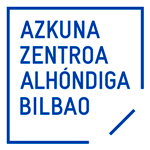
Valencia, 1985. Graduate in History and PhD in Archaeology at the University of Valencia. His interest in the ancient Mediterranean cultures took him to participate in archaeological projects in Greece, Italy, Morocco, and Spain. He has worked in institutions such as the European Research Council, the British School at Athens, or the Prehistory Museum of Valencia.
He has worked in institutions such as the European Research Council, the British School at Athens, or the Prehistory Museum of Valencia.
His professional activity has developed around heritage management and the study of the uses of the past in the present. He is responsible for the project ‘Piedra - Arqueología y cultura de masas’ (Stone – Archaeology and mass culture) and has published different books related with building collective memory, such as como Receptari Extraviat (2016), El barri que vam imaginar (2017) and A la recerca dels orígens (2018).
Share:
SPQR now!
What are the initials SPQR doing on the manholes of the city? And the Capitoline Wolf on the crest of a football team? What is it that moved the people to continue offering flowers to Julius Caesar? Does a wine with an ancient god even taste better? Why are there Roman Legionnaires taking selfies with tourists in front of the Colosseum?
The presence of the Ancient in Rome in the 21st century Rome is undisputed. Her streets and squares are marked with ancient archaeological remainders, re-used in posterior periods, or recuperated from the previous century for cultural consumption. Roman society has built and continues to build around that material inheritance, using its own imaginary of the past, fed by references such as film, literature, and tourism itself. And in so doing, hybrid languages where archaeology converges with mass culture are formed. Languages that end up being expressed on the urban stage.
By studying the local map, publicity, urban art, names of places, souvenirs, architecture, and even supermarket products, comes the project SPQR now! It aims to explore the contemporary imaginary of the ancient Roman world projected on the city of Rome.
To live in a city in which the past not only is, but actually forms an integral part of the daily life of its inhabitants, conditioning it, has ended up surpassing the initial limits of this project.
From the original idea that was to focus on the most static and tangible aspects of the city, meaning, the attrezzo of which the urban stage is made up of, the project took its own course and derived to a transversal study of the links that the Romans create with their ancient past. This richer and more complete perspective implies speaking of tangible and intangible, of the identifying machinery and the different spheres, but also of politics, fashion, language, cinema, immigration, contemporary art, gastronomy. In essence, of situating and contextualizing the place of the past, in the present.
It was necessary to manage different types of document sources to approach this reality, from bibliographies and archives to urban space in itself and the material culture of the 21st century, resorting to techniques and tools of ethnography, history, and archaeology.
The truth is that the activation of that ethnographic look, converted into a type of radar of uses of the past, determined my way of seeing, understanding, and living the city.
A project such as SPQR now! That speaks of society and collective memory, unquestionably lives off interaction. Interaction in multiple directions. With the city, which is the performative stage. With its inhabitants, who are the protagonists of the stories. And of course, with the immediate context in which the research is taking place.
So, although it had begun premeditated, SPQR now! has the seal of Rome and the Spanish Academy. Because if the city builds a permanent spotlight of stimulation, getting close to it from the specificness of the Academy reaches deep on a professional and personal level. The place, the contrast between retreat and encounter, the strange sensation of stability, and all the while, the contradictions and the de-structuring of the research and creative process, the kitchen as a motor, the views, the visits, and the excursions, and above all the co-habiting with people who live and work there, make the stay at the Academy a unique living experience.
